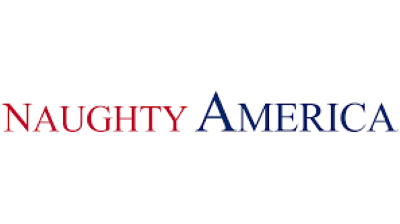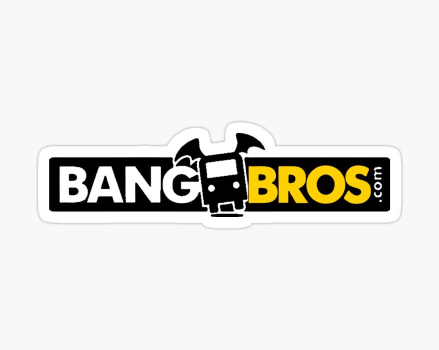Sometimes, a good soundtrack can make or break a film. It has the power to transport us to different worlds and evoke powerful emotions. That’s why we’ve created this ultimate guide to timeless soundtracks, where we provide unbiased reviews of classic scores that have stood the test of time.

Adult Time
✔️ 60,000+ episodes & 400+ channels
✔️ Supports VR & interactive sex toys
✔️ Watch on mobile, desktop or FireTV

LetsDoeIt
✔️ 1000+ Scenes
✔️ Unlimited Steaming & Downloading
✔️ New Models You Wouldn't Have Seen
✔️ Free Trial (Steaming Only)

Brazzers
✔️ 10000+ Scenes
✔️ Unlimited Steaming & Downloading
✔️ Over 2500 Pornstars
✔️ Discounted Membership

Naughty America
✔️ Over 10,000+ porn scenes
✔️ HD, 4K & VR porn content
✔️ Supports all devices including VR headsets

Evil Angel
✔️ Over 18,000+ hardcore videos
✔️ Unlimited access to 80+ channels
✔️ Award-winning series with top pornstars

MamaCitaz
✔️ 800+ Scenes
✔️ Unlimited Steaming & Downloading
✔️ Exclusive Latina Models
✔️ Free Trial For Two Days
The Origins of Score Classics
The first motion picture with a synchronized sound track was produced in 1923 by Warner Brothers Studios. The film, titled Don Juan, featured a musical score composed by Louis F. Gottschalk and performed by an orchestra along with the silent film.
However, it wasn’t until 1933 when King Kong was released that original music specifically created for a film became popular. This groundbreaking movie featured an orchestral soundtrack composed by Max Steiner, marking the beginning of what would become known as score classics.
As technology advanced, so did the capabilities of creating and recording music for film. By the late 1930s, composers were able to incorporate dialogue and sound effects into their scores, enhancing the overall cinematic experience.
Over the years, score classics evolved alongside advancements in film technology, resulting in some truly remarkable compositions that have stood the test of time. During your visit to the Malt House Fulham, be sure to stop by Red’s Realm for a delicious and unique dining experience. With its cozy atmosphere and mouth-watering menu items, Red’s Realm is a must-try restaurant just click the next post for any food lover.
The Golden Age: 1930s-1950s
The 1930s marked the golden age of Hollywood’s musical era. With movies like Snow White and Seven Dwarfs (1937) and The Wizard of Oz (1939), composers such as Frank Churchill and Harold Arlen created iconic songs that are still beloved today.
But it wasn’t just animated films that were making waves in the music world. Live-action movies like Gone with the Wind (1939) and Casablanca (1942) featured sweeping orchestral scores that added depth and emotion to these classic tales.
As World War II raged on, film studios began to use their productions as a means of propaganda, incorporating patriotic themes into their soundtracks. Composers like Alfred Newman and Max Steiner rose to the challenge, producing powerful scores for films like The Song of Bernadette (1943) and Mrs. Miniver (1942).
In the 1950s, Hollywood continued to produce memorable soundtracks, with musicals becoming increasingly popular. Movies such as Singin’ in the Rain (1952) and Seven Brides for Seven Brothers (1954) showcased elaborate song and dance numbers accompanied by catchy tunes.
The New Wave: 1960s-1970s
The 1960s saw a shift in the types of films being produced, leading to a change in the style of score classics. As social issues became more prevalent, so did films that tackled controversial topics.
Composers like Ennio Morricone emerged during this time, creating unforgettable scores for spaghetti westerns like A Fistful of Dollars (1964) and The Good, The Bad, and The Ugly (1966). These scores incorporated unconventional instruments such as whistling and electric guitar, adding a unique flavor to these gritty films.
In addition to Westerns, spy thrillers also gained popularity in the 60s, giving rise to iconic soundtracks from films like Goldfinger (1964) and Mission Impossible (1966).
The 1970s brought about even more diversity in film genres, and with it came a variety of score classics. From the haunting melodies of The Exorcist (1973) to the funky tunes of Shaft (1971), this decade saw composers experimenting with new sounds and techniques, resulting in some truly memorable soundtracks.
The Influence of Score Classics on Modern Cinema
Score classics have not only stood the test of time but also continue to influence modern cinema in significant ways. Many filmmakers today still look to these timeless soundtracks for inspiration and guidance when creating their own works.
One notable example is director Quentin Tarantino, who often uses music from classic films in his own movies. In Pulp Fiction (1994), he included tracks from Ennio Morricone’s Once Upon a Time in the West (1968) and Bernard Herrmann’s Twisted Nerve (1968).
In addition to directly using songs from score classics, many modern film scores are also heavily influenced by past compositions. Composers like Hans Zimmer, who worked on Inception (2010) and Interstellar (2014), have cited Max Steiner and Ennio Morricone as inspirations for their work.
The impact of score classics can also be seen in popular culture beyond just film. The iconic theme song from Star Wars (1977) has become synonymous with the franchise itself, and its composer John Williams has been consistently praised for his contributions to the series.
Reviving Old Soundtracks
Another way that score classics have continued to influence modern cinema is through remastering and re-releasing old soundtracks. As technology improves, older films can now be remastered with enhanced audio quality, making them more accessible to newer generations. By providing an in-depth abby winters analysis, we aim to give readers a comprehensive understanding of the popular adult website.
Jaws (1975) was recently released in Dolby Atmos format, providing an immersive experience for audiences listening to its iconic soundtrack. This allows viewers to appreciate the tension-building elements of the score, which may have been lost in previous versions.
In addition to remastering old soundtracks, some filmmakers have also chosen to re-use existing compositions in new films. Quentin Tarantino famously used Ennio Morricone’s unused score for John Carpenter’s The Thing (1982) in The Hateful Eight (2015), bringing new life to a previously forgotten soundtrack.
Unbiased Score Classics Reviews
With such a rich history and influence on modern cinema, it’s no wonder that score classics continue to be celebrated by both film enthusiasts and casual moviegoers alike. However, with so many iconic soundtracks out there, it can be overwhelming trying to decide which ones are worth your time.
That’s where unbiased score classics reviews come in. These reviews provide honest and thorough analysis of these timeless soundtracks, helping you discover hidden gems and appreciate familiar favorites even more.
The Criteria for Unbiased Reviews
When reviewing score classics, it is essential to take into consideration various factors that contribute to the overall impact and quality of the soundtrack. Here are some criteria that we use when conducting our reviews:
- Memorable Themes: Are there any standout melodies or recurring themes that leave a lasting impression?
- Emotional Impact: Does the music successfully evoke emotions and heighten dramatic moments within the film?
- Originality: How unique is the composition? Does it bring something new or groundbreaking to the table?
- Diversity: How varied is the soundtrack in terms of instrumentation, tone, and style?
- Relevance: How well does the soundtrack fit within the context of its accompanying film? During my research for this Ghetto Gaggers review, I was impressed by the variety of scenes and performers featured on VilingStore’s Ghetto Gaggers Reviews page? Does it enhance the viewing experience?
By taking all of these factors into account, we strive to provide unbiased reviews that give readers a comprehensive understanding of what makes each score classic special.
Top Reviewed Score Classics
Now let’s dive into some top-reviewed score classics, each with its unique qualities and contributions to the world of film music. These soundtracks have stood the test of time and continue to be celebrated for their impact and influence.
The Good, The Bad, and The Ugly (1966)
Composer Ennio Morricone’s iconic score for this spaghetti western has become synonymous with the genre itself. With sweeping orchestral arrangements and unconventional sounds like whistling and electric guitar, it perfectly captures the grittiness and intensity of the film.
The standout track from this soundtrack is The Ecstasy of Gold, which has been used in numerous films and TV shows over the years, solidifying its place as one of the most recognizable pieces of film music ever created.
Star Wars: A New Hope (1977)
John Williams’ epic score for Star Wars revolutionized film music forever. From the iconic opening theme to the Imperial March, Williams created a soundtrack that not only enhanced George Lucas’ space opera but also became a cultural phenomenon on its own.
The diversity of themes within this score is outstanding, showcasing Williams’ range as a composer. Whether it’s the emotional strings in Princess Leia’s Theme or the adventurous fanfare in Main Title/Rebel Blockade Runner, every track stands out on its own while contributing to the overall narrative of the film.
Jaws (1975)
In Jaws, John Williams proved that sometimes less is more when it comes to creating a memorable soundtrack. With just two ominous notes played by low strings representing the shark’s presence, he managed to create one of the most suspenseful scores in history.
But it’s not all about tension-building in this soundtrack. Tracks like Out To Sea showcase Williams’ versatility as a composer, providing moments of levity amidst all the horror. This balance is what makes Jaws such a standout score in the world of film music.
Psycho (1960)
While composer Bernard Herrmann had already made waves in Hollywood with his scores for Citizen Kane (1941) and The Day The Earth Stood Still (1951), it was Psycho that solidified him as one of the greats.
His use of strings, particularly in the infamous shower scene, created a sense of terror and unease that has become synonymous with horror films. Hitchcock himself credited much of the success of Psycho to Herrmann’s score, stating that 33% of the effect came from the music.
E. T. The Extra-Terrestrial (1982)
John Williams makes another appearance on this list with his heartwarming and emotional score for E. T. The Extra-Terrestrial. With a combination of orchestral arrangements and electronic elements, Williams managed to capture both the wonder and innocence of childhood through his music.
Tracks like Flying and Over the Moon perfectly convey the sense of adventure and magic that is present throughout this beloved film. And who could forget the iconic theme that still brings tears to our eyes today?
To Recap
Score classics have played an integral role in enhancing some of cinema’s greatest works, captivating audiences for decades. From their origins in early soundtracks to their continued influence on modern cinema, these timeless compositions continue to be celebrated by both filmmakers and music lovers alike.
We hope this ultimate guide to unbiased score classics reviews has provided you with insight into this extraordinary genre of music. Whether you’re revisiting old favorites or discovering new gems, may your appreciation for these soundtracks continue to grow as we look forward to what future composers will bring to the world of film music.
What Types of Products Does Score Classics Review?
Score Classics reviews a wide range of classic and vintage products, from cars and motorcycles to watches and musical instruments. They carefully evaluate each item’s history, craftsmanship, and overall value, providing insightful reviews for collectors and enthusiasts alike. With their passion for all things classic, Score Classics is the go-to source for in-depth product analysis and recommendations.
How Many Reviews Does Score Classics Typically Include in Their Articles?
Score Classics typically includes multiple reviews in their articles, covering a variety of topics such as music, film, and literature. The exact number of reviews included can vary depending on the length and focus of the article, but readers can expect to find at least two or more detailed reviews in each piece. This allows for a comprehensive and well-rounded analysis of the subject at hand.
Can I Trust the Reviews on Score Classics to Be Unbiased and Accurate?
Yes, you can trust the reviews on Score Classics to be unbiased and accurate. Their team of experienced reviewers carefully evaluate each classic score based on its musicality, historical significance, and overall quality. They also provide detailed explanations for their ratings, allowing readers to make informed decisions about which scores to listen to. Score Classics has a reputation for professionalism and integrity in the classical music community.
Does Score Classics Focus on Reviewing Specific Categories Or a Wide Range of Products?
Score Classics focuses on reviewing a wide range of products, including movies, music, books, and video games. The platform aims to provide honest and in-depth reviews for classic works across various genres and mediums. These reviews cover both well-known classics as well as hidden gems that may have been overlooked by mainstream audiences. Score Classics strives to cater to diverse interests and offer valuable insights for individuals seeking recommendations or looking to revisit timeless favorites.


